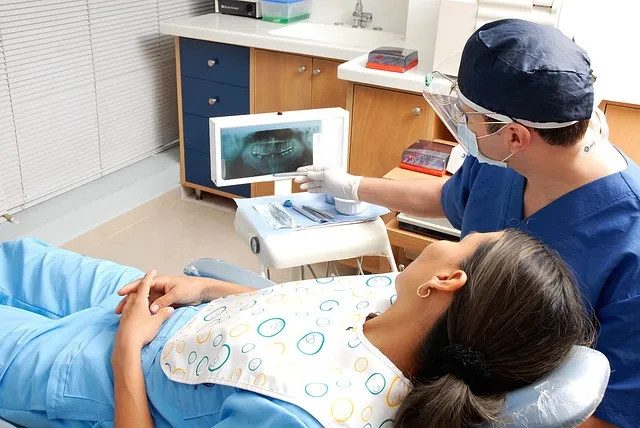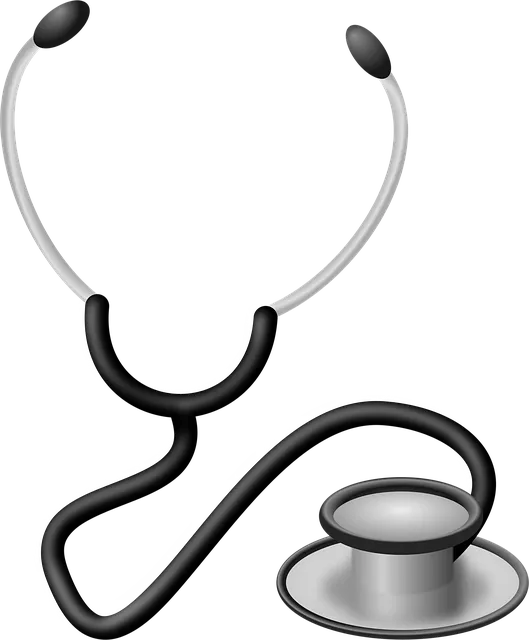The text discusses the challenges of traditional manual scheduling in clinics, highlighting time-consuming processes, errors, double-bookings, and no-shows that lead to inefficient resource utilization. It promotes automated patient booking systems as a solution, integrating with Electronic Medical Records (EMR) for real-time data management and improved efficiency. These systems save time, enhance patient satisfaction, and minimize no-shows through online booking and calendar integration. Implementing these tools allows staff to focus on direct patient care, improves clinic utilization, and can be optimized through advanced analytics. Success is measured by clinic efficiency, patient satisfaction, and key performance indicators, with potential for future enhancements.
In today’s fast-paced medical landscape, efficient scheduling is paramount. Traditional methods often fall short, leading to overbooked clinics, frustrated patients, and decreased satisfaction. Enter automated patient booking systems—a game-changer designed to streamline appointments for both new and existing patients. This article explores how these innovative tools tackle the challenges of traditional scheduling, improving clinic efficiency while enhancing patient experiences. Discover the key features, benefits, and implementation steps of automated patient booking systems.
- Understanding the Challenges of Traditional Scheduling
- Introducing Automated Patient Booking Systems
- Key Features of an Efficient Appointment Management Tool
- Benefits for Clinics and Patients Alike
- Implementing the System: A Step-by-Step Guide
- Measuring Success and Future Enhancements
Understanding the Challenges of Traditional Scheduling

The traditional manual scheduling process in clinics often presents several challenges that can impact both efficiency and patient satisfaction. Typically, this involves a clunky paper-based system or outdated digital methods, where appointments are scheduled, managed, and tracked by hand. This approach is not only time-consuming for administrative staff but also increases the risk of errors, double-bookings, and conflicts in the calendar.
Moreover, manual scheduling often leads to inefficiencies like no-shows, where patients fail to attend their appointments, leaving valuable clinic resources underutilized. Additionally, coordinating with patients’ electronic medical record (EMR) systems can be a cumbersome task, making it difficult to access patient history and preferences promptly. These issues contribute to longer wait times, decreased productivity, and reduced overall satisfaction for both staff and patients. Automating patient booking through integrated EMR scheduling and calendar solutions offers a viable solution to overcome these challenges.
Introducing Automated Patient Booking Systems

In today’s digital era, healthcare facilities are increasingly turning to automated patient booking systems to streamline their operations and enhance efficiency. These innovative solutions offer a seamless way to manage both new and existing patients’ schedules, revolutionizing traditional appointment-setting practices. By implementing scheduling automation, clinics can bid farewell to cumbersome manual processes, saving time and resources.
Automated patient booking software not only simplifies the process but also significantly improves patient satisfaction. With real-time availability updates and online booking capabilities, patients can conveniently choose appointment slots that suit them best. Moreover, efficient no-show management features built into these systems help reduce rescheduling disruptions and optimize resource utilization, ensuring every patient interaction counts.
Key Features of an Efficient Appointment Management Tool

An efficient appointment management tool is a game-changer for any clinic or healthcare facility, offering a range of features to streamline operations and enhance patient experiences. These tools are designed to revolutionize the way appointments are scheduled, managed, and tracked, ensuring optimal utilization of resources. At the core of this technology lies automated patient booking, which eliminates manual efforts and reduces administrative burdens, allowing staff to focus on patient care.
Key components include seamless EMR (Electronic Medical Record) scheduling integration, enabling real-time updates and efficient data management. This ensures that patient information is accurate and readily available. Additionally, robust no-show management features help maintain schedule adherence by promptly rescheduling missed appointments and minimizing disruptions. Calendar integration in healthcare settings further enhances organization, providing a centralized view of appointments and facilitating better resource allocation. These tools ultimately contribute to improved clinic efficiency and higher patient satisfaction rates.
Benefits for Clinics and Patients Alike

Automating patient booking through an efficient scheduling system brings a multitude of benefits to both clinics and patients. For healthcare providers, this technology streamlines the process from initial contact to appointment confirmation, significantly reducing administrative burdens. It allows staff to focus more on patient care rather than tedious manual scheduling tasks, enhancing overall clinic efficiency. Moreover, real-time calendar integration with EMR (Electronic Medical Records) systems ensures accurate and up-to-date patient data, facilitating better clinical decision-making.
Patients benefit from a simplified, user-friendly booking experience that fits seamlessly into their daily routines. Automated scheduling eliminates the hassle of lengthy phone calls or waiting for availability, providing immediate access to appointment slots. This convenience leads to improved patient satisfaction and encourages timely follow-up visits, fostering stronger patient-clinic relationships. The system’s ability to manage both new and existing patients’ schedules ensures optimal clinic utilization, benefiting everyone involved in the healthcare process.
Implementing the System: A Step-by-Step Guide

Implementing an automated patient booking system is a strategic move to revolutionize clinic operations and enhance overall efficiency. Here’s a step-by-step guide on how to integrate this game-changing technology, focusing on seamless calendar integration healthcare.
1. Assess Your Clinic’s Needs: Begin by evaluating your existing scheduling processes. Identify pain points like manual appointment booking, no-show rates, and time wastage. This analysis will guide your choice of an appointment software that aligns with your clinic’s unique requirements.
2. Select the Right Software: Research and opt for a user-friendly automated patient booking solution offering features such as online scheduling, real-time calendar updates, and automated reminders. Look for tools tailored to healthcare, ensuring compliance with data privacy standards.
3. Data Migration: Transfer existing patient information from manual systems to the new software securely. Ensure accuracy during this process, as it forms the foundation for efficient no-show management and effective patient communication.
4. Staff Training: Equip your team with the knowledge to utilize the new system effectively. Training sessions should cover scheduling, appointment confirmation, and managing patient records within the platform.
5. Pilot Testing: Implement the system in a controlled manner, starting with a trial period. Gather feedback from staff and patients to identify and rectify any glitches or user experience issues before a full-scale rollout.
6. Full Implementation: Once satisfied with the pilot test results, fully integrate the automated patient booking system into daily clinic operations. Promote it among patients through various channels like emails, websites, and social media for seamless adoption.
Measuring Success and Future Enhancements

Measuring success is a key aspect of any new implementation, especially for an automated patient booking system. The primary metrics to evaluate are clinic efficiency and patient satisfaction. In terms of efficiency, tracking factors like appointment turnaround time, no-show rates, and operator workload can highlight improvements brought about by the automated patient booking service. For instance, reduced wait times and increased operational fluidity indicate successful EMR scheduling integration. Patient satisfaction is equally important; surveys, feedback forms, and repeat visits can measure how well the new system meets their needs and expectations, potentially leading to better overall healthcare experiences.
Looking ahead, future enhancements could focus on expanding the appointment software’s capabilities to accommodate specialized clinics or unique patient flows. Integrating with existing EMR systems for seamless data transfer and ensuring compatibility across different devices and platforms are also areas of potential growth. Additionally, incorporating advanced analytics to predict demand patterns and optimize staffing resources can further revolutionize scheduling automation, fostering a more efficient and responsive healthcare environment.
